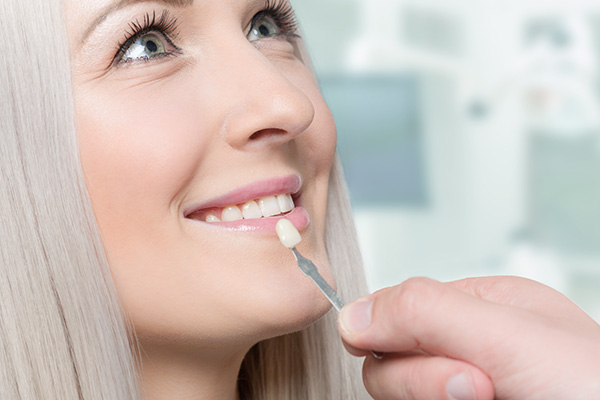 General dentistry focuses on preventative treatments, but it includes using dental cosmetics like veneers to restore or enhance the appearance of teeth. A veneer is a tooth-shaped restoration that is cemented to the front part of a tooth. It covers up any imperfections, damages, or deformities on that part of the tooth. Veneers started out as a way to make the smiles of Hollywood actors look more attractive on screen, and it took off in popularity from there.
General dentistry focuses on preventative treatments, but it includes using dental cosmetics like veneers to restore or enhance the appearance of teeth. A veneer is a tooth-shaped restoration that is cemented to the front part of a tooth. It covers up any imperfections, damages, or deformities on that part of the tooth. Veneers started out as a way to make the smiles of Hollywood actors look more attractive on screen, and it took off in popularity from there.
Veneers are typically recommended for teeth at the front of the mouth, and they can completely transform the way that your smile looks. Problems that general dentistry can address with veneers include:
- Stained teeth
- Chipped or broken teeth
- Deformed teeth
- Crooked teeth
- Spaces between teeth
- Misaligned teeth
How general dentistry restores teeth with dental veneers
Getting teeth restored with veneers involves multiple trips to the dentist. During the first visit, the dentist educates the patient about the process and examines their teeth and gums. The dentist might recommend other restorations, like crowns, if the damage to the patient’s teeth affects other areas besides the front-facing sides.
Placing conventional veneers requires removing enamel from the front part of the teeth being treated. It is a permanent modification that cannot be reversed in the future. Teeth that have been prepared for veneers will always need restorations to protect them moving forward.
There are specialty veneers called “no-prep” that do not require shaving off the enamel. These veneers are thinner than standard veneers, so they are better suited for cases with mild to moderate damage to a patient’s teeth. Severe discoloration or deformities on a tooth often require conventional veneers. The patient will be given the time to choose which option they prefer, and a date will be set for the first part of the treatment.
The process
The first part of the process of placing veneers starts with the dentist cleaning and preparing the patient’s teeth. A shot of a local anesthetic will be administered so the person will not feel pain as the dentist trims the enamel on their teeth.
Once all of the teeth being treated have been prepped, an impression of them is made by using digital images to create a 3D model. Alternatively, the dentist might take an impression of the patient’s teeth by having them bite down on a mold. The mold is sent to a dental lab where restorations like veneers are made. It takes a couple of weeks for the finished restorations to get back to the dentist. The patient gets temporary veneers for their prepped teeth to protect them while they wait for their custom veneers.
The temporary veneers are taken off during the second appointment, and customized veneers are cemented into place. Alterations are made as needed to ensure that everything looks right.
Transform your smile with veneers
Anyone can now craft their desired smile with veneers. Call or stop by our Cliffside Park clinic to set up an appointment with our dentist.
Request an appointment or call Cliffside Family Dentistry at 201-917-7977 for an appointment in our Cliffside Park office.
Related Posts
A general dentistry professional provides primary dental treatment to patients to maintain excellent oral health. These dentists can help you with any oral issues you may have, including bad breath. If you recently developed bad breath or have had it for a while, it is critical to undergo treatment. The condition can be embarrassing and…
General dentistry can help you develop good oral health habits in many ways. Going to the dentist’s office will also reduce your risk of having cavities and gum disease. But visiting the dentist every six months is not enough to promote healthy, strong teeth and gums. Daily habits such as brushing your teeth are vital.…
General dentistry focuses on keeping your teeth and gums healthy. Teeth cleanings are one of the staples of general dentistry, and the American Association of Dentists recommends getting them at least two times per year. The procedure protects teeth against tooth decay and gum disease.Tooth decay and gum disease are the top two reasons people…
